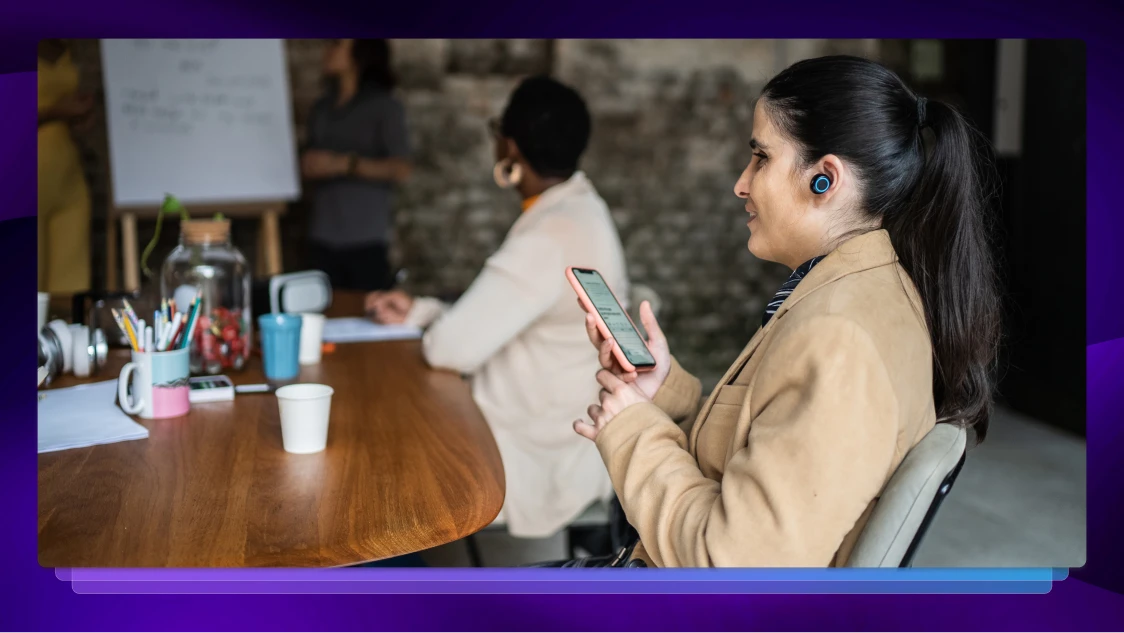How to Engage Students in Online Learning
As the demand for remote learning technology remains, instructors must figure out how to engage students in online learning.

To facilitate online learning, many colleges and universities have invested in remote learning management software and video conferencing tools. In fact, before the pandemic, the adoption of education technology was already on the rise, with global learning technology investments reaching $18.66 billion in 2019. Due to the pandemic, the demand for online learning technology has surged but according to Bay View Analytics, 70% of 1.5 million faculty members in the United States have never taught an online class. The cumulative effect of increased demand and educators attempting to transfer in-person teaching methods to online strategies can be a challenge for both instructors and learners.
Experts have found that a majority of students miss face-to-face interaction with teachers and classmates. Also, 53% of the 75% of higher education students who reported their learning experience in online courses was unengaging, are now spending less time on homework. Another 28% of students are having difficulty navigating online education equipment, while 22% have struggled to access online learning materials. These challenges have caused more than a quarter of college and university students to possibly discontinue their studies for the upcoming Fall 2020 semester.
Fortunately, online instructors can implement various strategies to facilitate the process of creating successful remote classrooms. Here are five key elements that will help develop an engaging online learning experience for students.
1. Encourage Students by Utilizing Live Captions in Online Learning
Live captions not only make videos more accessible to everyone but also keep students engaged in sound-sensitive environments. While many students who are hard of hearing rely on captions to learn and retain course material, a study has also discovered that 80% of individuals who use captions don’t have a hearing impairment. Virtual classes must have accurate live captions since any inaccuracies can negatively impact students’ learning and performance.
You can also encourage them to utilize technology in other ways, such as using these great student productivity apps.
2. Visual Aids in Course Materials Keeps Students Engaged
Just as visual aids are essential in a classroom setting, they are also crucial in online learning to make lessons more effective and easily understandable. According to research, an individual is 65% more likely to remember something that includes a graphic compared to just text by itself. Whether it’s a photograph, video, slideshow, graph, or model, visual aids have been known to make difficult concepts easy to digest, assist lecture retention, and keep students more engaged.
3. Increase Student Engagement by Testing Their Knowledge
Online learning sometimes makes it difficult for instructors to assess students’ understanding of course materials. Therefore, virtual classes with clearly graded curriculums allow educators to gauge whether students have successfully processed lessons, and also allow both parties to quantify their progress. In fact, research found that tests, including pop quizzes, are valuable tools that improve students’ learning and retention.
Additionally, students who frequently take tests outperform individuals who focus primarily on practice exercises, restudying, and filler activities. Between lectures, it’s ideal to quiz students to ensure they understand new concepts and can successfully apply them. Instructors using Zoom to host online courses should take advantage of live polls to increase student engagement as well. The poll function can be used to check students’ understanding of topics and also gather feedback regarding various subjects.
4. Include Worked Examples in Course Content
Studies have found that students, or non-experts, learn more effectively through detailed explanations of solved examples, as opposed to attempting to solve them. According to the Massachusetts Institute of Technology, it’s effective for students to study multiple worked examples to understand new concepts until they can reach a level of familiarity with the subject matter. Therefore, to help students comprehend the course content and ensure that they can successfully complete the homework, instructors should spend time leading the class through step-by-step solutions of examples that are similar to the day’s lesson. Lecturers can pre-record themselves working on practice exercises and play the videos during class for online students. However, sharing one’s screen and working with students live is the most recommended method.
5. Create Interactive Content to Improve Online Learning Experiences
One of the best ways to encourage students to participate in class and stay engaged is by creating online lessons that are interactive. Interactive lessons help increase a student’s energy, which in turn promotes collaboration with others and improves communication skills. It also gives their mind a break from viewing voiced-over, static slideshows. Teachers can create interactive virtual lessons by planning hands-on experiments, gamifying course materials, inviting learners to comment on content, and creating immersive videos.
Bonus: Hold Virtual Office Hours
As instructors pivot their classes to a virtual setting, they need to consider implementing online office hours. Office hours are a great way for educators to make personal connections and motivate students. It’s also a chance for students – who feel disconnected during virtual classes – to ask questions directly and receive answers efficiently from instructors. To open channels outside of the online course, educators should consider hosting private office sessions throughout the week, as well as public hangout sessions.
The latter can involve several students gathering after class and having organic discussions with the instructor and their peers. This activity should be purposed to create a level of familiarity which in turn enables learners to voice any concerns or provide feedback regarding lessons. In general, the most important foundation for an effective virtual learning environment is for educators to bring passion and energy into the classroom. This type of optimism helps encourage students to participate in class, stay engaged, and ultimately excel in their courses.
DOWNLOAD THE ULTIMATE GUIDE TO ACCESSIBILITY IN HIGHER EDUCATION















